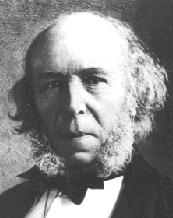Have you noticed how, when a good character is temporarily turned evil via magic or alien science or what have you, he or she generally tends to become much more self-confident? And so it is in Spider-man 3, which I finally saw last night.
This frequent association of evil with self-confidence suggests some deep confusion of values; and those who accept it thereby become susceptible, I fear, to one of two temptations: either to renounce self-confidence (in order to avoid being evil) or to embrace evil (in order to hold on to self-confidence). Such a perspective contrasts with the more salutary Platonic-Aristotelean-Thomistic understanding of evil as a lack, an absence, a falling short, a descent into weakness and inefficacy.
Even Tolkien seems to succumbs to the prevailing notion when he says of Frodo, at the moment when Frodo finally succumbs to the temptation of the Ring: “Then Frodo stirred and spoke with a clear voice, indeed with a voice clearer and more powerful than Sam had ever heard him use ….” I say “even” because Tolkien generally holds the opposite view: his heroes tend to grow more forceful with time, while his villains, corrupted by their own evil, become weaker and slimier. (That’s one reason I prefer the book version to the movie version of Saruman’s end; the movie gives him a grandiose ending befitting a grandiose villain, while the book reduces him to a sordid con man before finishing him off in a back alley.) And I say “seems” because the Ring is not really strengthening or liberating Frodo, though it offers the illusion of strength and liberation, like the Biblical serpent’s promise that “you shall be as gods.”
Rand, like Tolkien, expressed a Platonic-Aristotelean-Thomistic understanding of evil when she wrote in We the Living that our true enemy is not “a tall warrior in a steel helmet, a human dragon spitting fire,” but rather “[l]ittle puny things that wiggle,” or again in The Fountainhead that “men had been so mistaken about the shapes of their Devil – he was not single and big, he was many and smutty and small.” And I’ve blogged previously about Rand’s observation of the tendency of writers to smuggle the forbidden “fire of self-assertiveness” into their works in the form of the “fascinating villain or colorful rogue, who steals the story.”
Incidentally, one of the great benefits of Peikoff’s Ominous Parallels, for all it faults, lies in the way it undermines the popular (and dangerously seductive) image of the Nazis as, in effect, human dragons spitting fire, and reveals them instead as the puny wiggling things they were.
 First: Spencer was in fact Victorian England’s leading opponent of imperialism; in
First: Spencer was in fact Victorian England’s leading opponent of imperialism; in